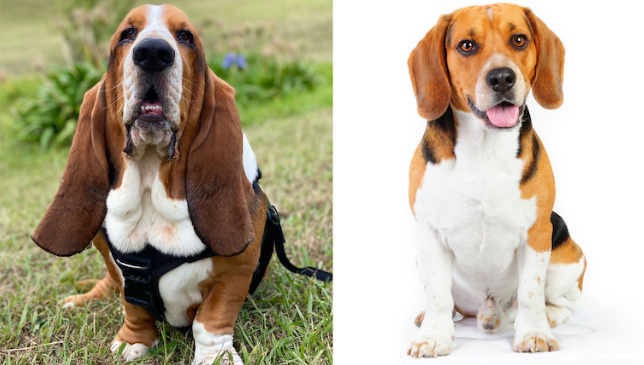Bagle Hound Breed
Introduction:
Are you in search of a new furry companion who is full of energy, intelligence, and charm? Look no further than the Bagle Hound! This one-of-a-kind breed is a cross between the Beagle and the Basset Hound, resulting in a delightful combination of traits from both parent breeds. In this article, we will delve into the world of the Bagle Hound, uncovering their origins, unique characteristics, training needs, and more. Join us on this journey to discover the fascinating world of the Bagle Hound!
Origins and History of the Bagle Hound
The Bagle Hound is a relatively recent addition to the world of designer dog breeds, with its origins dating back to the 1990s in the United States. Like other mixed breed dogs, the exact origins of the Bagle Hound are unclear, and there is limited documentation about their history. However, it is believed that breeders were looking to create a dog that combined the hunting abilities and scenting skills of both the Beagle and the Basset Hound, resulting in the creation of the Bagle Hound.
Characteristics of the Bagle Hound
The Bagle Hound is a medium-sized dog that typically weighs between 30 to 60 pounds and stands about 12 to 15 inches tall. They have a sturdy and compact body, with a long, droopy ears and a distinctive hound-like appearance. Their coat is usually short and dense, coming in a variety of colors, including tri-colors, red and white, lemon and white, and more.
One of the most striking features of the Bagle Hound is their incredible sense of smell, which they inherit from their Beagle and Basset Hound parent breeds. They have an exceptional nose and are known for their tracking and scenting abilities, making them excellent hunting and detection dogs. Bagle Hounds are also known for their friendly and sociable nature, making them great family pets and companions.
Training and Exercise Needs of the Bagle Hound
As with any dog breed, early training and socialization are crucial for the Bagle Hound. They are intelligent and eager to please, but they can also be stubborn at times, so consistent and patient training is important. Positive reinforcement methods, such as rewards and treats, work best with the Bagle Hound, as they respond well to praise and motivation.
Bagle Hounds also require regular exercise to keep them mentally and physically stimulated. They have a moderate energy level and enjoy activities such as walks, runs, and playtime in the yard. Additionally, their hunting instincts may drive them to follow scents, so it’s important to keep them on a leash or in a secure, fenced area when outside.
Unique Traits and Behaviors of the Bagle Hound
The Bagle Hound has some unique traits and behaviors that set them apart from other dog breeds. Here are some interesting characteristics of the Bagle Hound:
Exceptional Scenting Ability: The Bagle Hound has an extraordinary sense of smell, thanks to their Beagle and Basset Hound heritage. They are known for their keen scenting ability and can follow a scent trail for miles, making them great hunting and detection dogs.
Friendly and Sociable Nature: Bagle Hounds are known for their friendly and sociable nature. They tend to get along well with people, children, and other pets, making them great family pets and companions.
Vocalization: Bagle Hounds are known to be vocal dogs, just like their parent breeds. They may howl, bark, or bay, especially when they catch an interesting scent or get excited. Proper training and management can help to control their vocalization tendencies.
Stubbornness: Bagle Hounds may inherit some stubbornness from their parent breeds, particularly the Beagle. They may have their own ideas and may require consistent and patient training to overcome their stubborn streak.
Exercise Needs: Bagle Hounds have moderate exercise needs and enjoy outdoor activities such as walks, runs, and playtime. They also have a strong prey drive and may enjoy scent games or tracking exercises to stimulate their natural instincts.
Frequently Asked Questions (FAQs) about the Bagle Hound
Q: Are Bagle Hounds good with children?
A: Yes, Bagle Hounds are known to be good with children. However, as with any dog breed, supervision and proper socialization are important to ensure a safe and positive interaction between children and dogs.
Q: How often does a Bagle Hound need exercise?
A: Bagle Hounds have moderate exercise needs and require daily exercise to keep them mentally and physically stimulated. This can include walks, runs, playtime, and scent games.
Q: Are Bagle Hounds easy to train?
A: Bagle Hounds can be trainable, but they may also have a stubborn streak inherited from their parent breeds. Consistent and patient training using positive reinforcement methods is usually effective.
Q: Do Bagle Hounds have any health concerns?
A: Like all dog breeds, Bagle Hounds may be prone to certain health issues, such as hip dysplasia, ear infections, and obesity. Regular veterinary care, proper grooming, and a healthy diet can help to minimize potential health concerns.
Conclusion:
In conclusion, the Bagle Hound is a unique and versatile breed that combines the best traits of the Beagle and Basset Hound. They are known for their exceptional scenting ability, friendly and sociable nature, and moderate exercise needs. While they may have some stubbornness and vocalization tendencies, with proper training, socialization, and care, Bagle Hounds can make loving family pets and loyal companions. If you are looking for a dog with a keen nose, a loving heart, and a charming personality, the Bagle Hound may be the perfect addition to your family!

